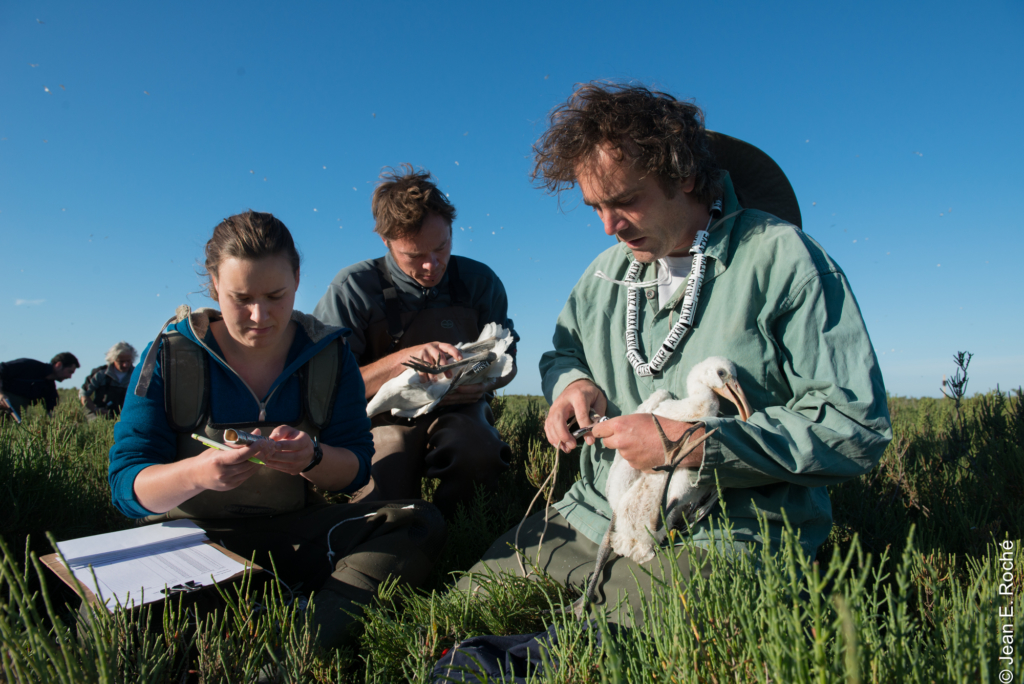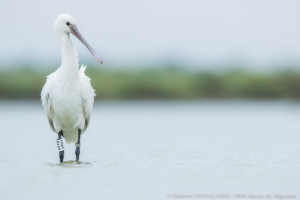Immerse yourself in a colony of an emblematic waterbird, the Eurasian Spoonbill (Platalea leurocodia).
By going to the Where is Spoony? [1] website, identify individual spoonbills and help us to understand how birds cope with the long migration routes they undertake every year. Join more than 700 volunteers and help Tour du Valat find all the Spoony´s.
This project is part of the Tour du Valat´s effort to monitor the Eurasian Spoonbill population breeding in Camargue [2], Southern France.
The Tour du Valat team individually marks spoonbills on the leg with a PVC ring containing a unique 4 letter/number code. The ringing operation occurs annually when the spoonbill chicks are still young and not yet able to fly. Since 2008, more than 3000 chicks have been ringed, of which some of have also been fitted with high-resolution GPS/GSM tags (since 2016).
After marking, we can individually identify these birds and follow their exciting journey. In addition to our team effort in Camargue, resightings of marked individuals are conducted by our partners in the different wintering grounds and stop-over sites (Algeria, France, Italy, Mauritania, Morocco, Portugal, Senegal, Spain, Tunisia…).

In this project, you will be able to assist our team processing the thousands of photos taken every year by camera traps placed in the colony.
The overarching aim of this project is to identify the mechanisms that influence the population dynamics of the Eurasian Spoonbill in Europe. With particular focus on the colonisation mechanisms of this species, as well as the migration strategies of individuals.
Camera traps help us to identify which birds survived the winter season, which are breeding in Camargue, and the breeding success of the population. Additional information such as gender and breeding partner, or even unusual events (like a wild boar intrusion or other species presence) can also be identified.
We need your help to process more than 30 thousand pictures!
Your efforts will allow us to process the pictures much faster and to understand how the spoonbills deal with migration strategies over various migration routes, which might have important policy applications for the protection of wetlands and conservation of waterbirds.
How to do it?
1- Go to Where is Spoony? [1]
2- Click on “Get started” [4]
3- Read the instructions by going to “Tutorial”
4- And start reading the rings on the pictures by clicking on “Task” [4]
 Do not hesitate to contact Hugo Ferreira [5], (e-mail [6]) PhD student at the Tour du Valat, for any questions or to ask them on the online discussion tool [7].
Do not hesitate to contact Hugo Ferreira [5], (e-mail [6]) PhD student at the Tour du Valat, for any questions or to ask them on the online discussion tool [7].
